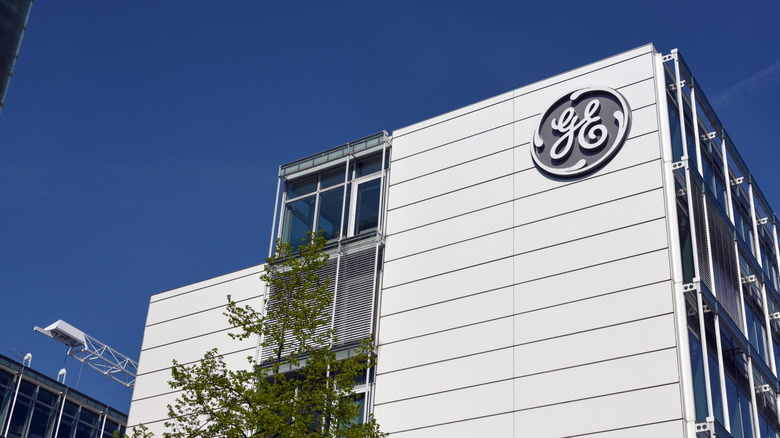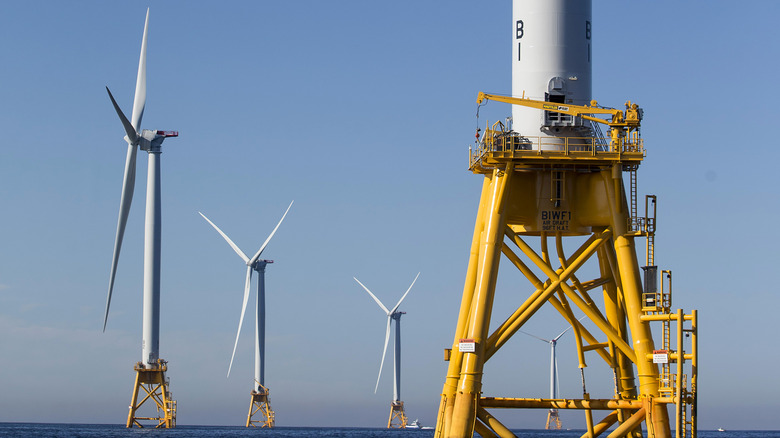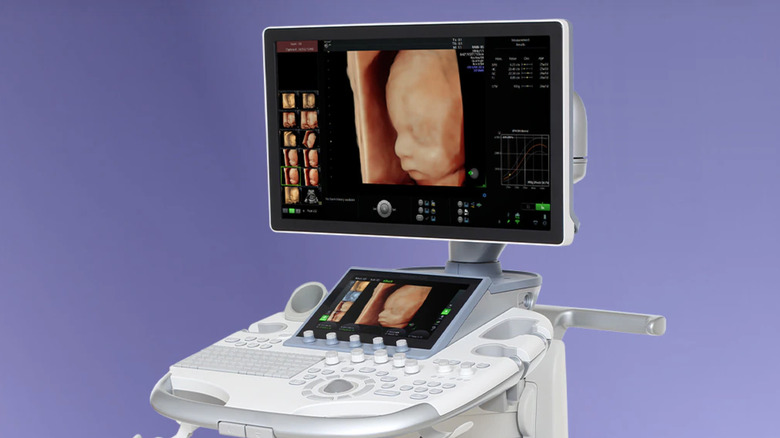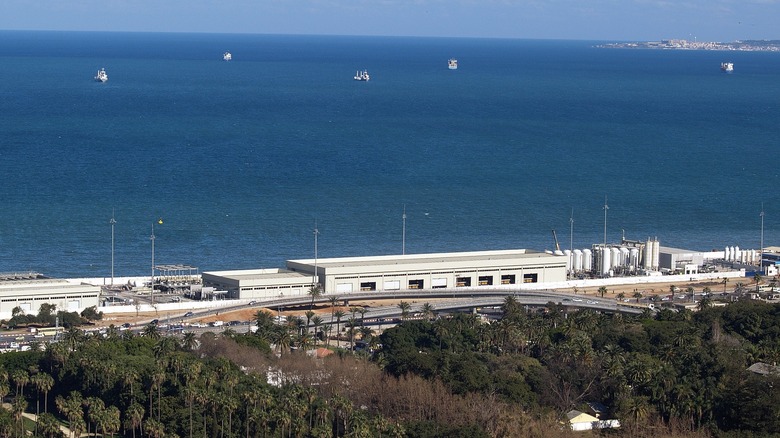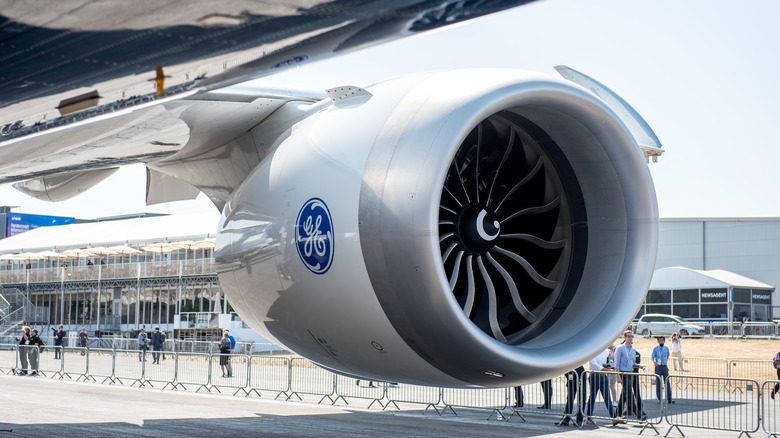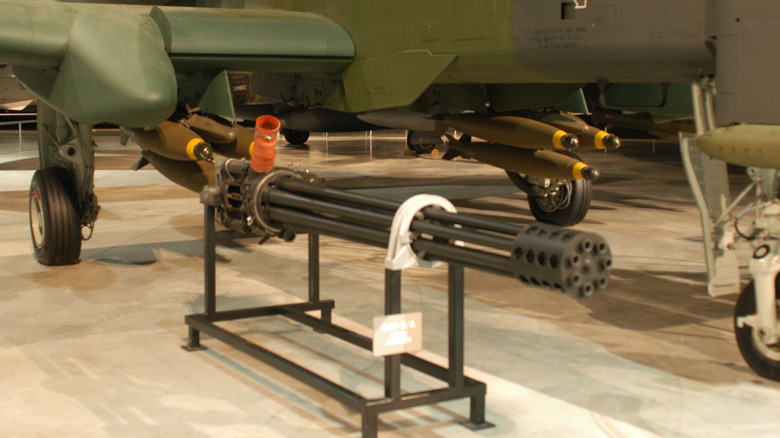5 Things You Probably Didn't Realize Were Made By General Electric
General Electric (GE) has been a global household name for decades, but many people don't realize that they've dipped their feet into more than just appliances. With over 150 years of history, GE has been a critical partner in the development of technology that influences almost every aspect of our lives — from the relationship between mothers and their unborn children to national security.
Although it was officially founded in 1892, GE's roots go back to the merger of several companies, which included Thomas Edison's Edison General Electric Company – originally founded as the Edison Electric Light Company to help market his groundbreaking incandescent lamp.
Since then, GE's in-house scientists have produced and patented several interesting, useful, and slightly terrifying products that have been used everywhere, from our homes and hospitals to the battlefield. So, if you're curious as to how this homegrown American brand continues to make a difference, here are a few products in GE's portfolio that might surprise you.
Wind turbines
In 2002, GE Power Systems planted seeds for its renewable energy business by acquiring assets from Enron Wind Corp. — a bankrupt global wind turbine supplier. Afterward, GE announced the launch of GE Wind Energy and reiterated its commitment to providing more clean energy solutions in a press release.
Over two decades later, GE provides a third of the world's electricity created using its power generation technologies with renewable energy making up 16% of its total industrial segment revenues, according to its 2019 annual earnings report [PDF]. In fact, GE doesn't just dabble in renewable energy, but actively makes some of the most powerful and capable technologies out there.
In 2019, GE Renewable Energy and Future Wind installed the prototype of the Haliade-X 12 wind turbine in the Netherlands, which can generate 67 GWh per year. Aside from the Halide-X 12, GE has supplied over 49,000 units of offshore and onshore wind turbines worldwide.
As well as wind turbines, GE has several other eggs in the renewable energy basket, including as hydroelectric turbines designed to minimally disrupt river ecosystems, and highly efficient gas turbines.
Women-focused medical devices
Since the 1890s, GE has used its expertise in electrical equipment to develop devices for the healthcare industry. From X-ray machines, the first commercial transmission electron microscope, to a slew of CT scanners and MRI machines, GE Healthcare has made devices used by doctors and medical professionals hailing from multiple practice areas — including women's health.
It's common for expectant mothers to find that the machine used for their 4D baby ultrasounds was manufactured by General Electric. On its website, GE shared that it created the first 4D high-res ultrasound system in 2000. In the years that followed, its Voluson series has become known as one of the most highly-rated ultrasound ranges out there.
With ultrasound systems, mothers can see a more accurate picture of their babies before birth, and doctors can detect issues like fetal anomalies. GE doesn't just develop things for the prenatal experience, it also manufactures infant incubator systems.
Aside from pregnancy-related technology, GE also began innovating other women-focused medical devices that help reduce discomfort in preventive medical procedures. In 2016, for example, the company created a mammography system called Pristina Dueta, which gives patients more control over their breast scans.
Water treatment technology
While you may be familiar with its home water filter systems, GE has also dabbled in smart water and waste management solutions on an industrial level, using advanced analytics to optimize wastewater facilities and predict pump failures days before they happen, as well as helping engineers to ensure the failures don't happen again.
Over the years, GE has also developed technology for other water treatment areas, and has produced purification facilities, like desalination and filtration, worldwide. GE began building the Hamma Water Desalination Spa in 2005, and claims it is capable of providing potable water to over 1.5 million people.
The plant became the largest one in the region and even won the 2016 Impact Award by the Overseas Private Investment Corporation (OPIC). In 2021, GE Renewable Energy's Grid Solutions built the first solar-powered desalination plant in Saudi Arabia.
Jet engines
If you're a frequent flyer, you've likely ridden in a commercial jet that makes use of a GE engine. According to Simple Flying, General Electric is the world leader in aircraft engines, and in partnership with French engine maker, Safran, provides engines for the Airbus A320 and Boeing 737.
Ever since General Electric Aircraft Engines released the Type I-A turbojet engine that powered the first American jet airplane in 1942, the company has been a staple of global aeronautics. After World War II, GE doubled down on its jet engine development, leading to the creation of the J-47. This "all-weather engine" became the world's most-produced engine, and even enabled the F-86 Sabre to set world speed records.
On top of the engines used for military purposes, GE also develops flight management systems and other components for commercial aircraft. For example, its GE9X engine is known to be one of the biggest engines available, and the most powerful commercial jet engine in the world.
GE's aircraft engine business was worth $32.9 billion in its 2019 annual report. While only about 18% of its revenue came from military orders, GE remains a crucial player in the United States' military strategy.
Gatling guns
Engines and flight components aren't the only things GE has in the air. It also produces some pretty deadly firearms, such as the GAU-8/A Avenger. Alongside Philco Ford, GE was selected to build the GAU-8's prototype in 1971. With an impressive length of 19 ft 10.5 in, the GAU-8/A was designed to be used against heavy and armored targets such as tanks, bunkers, and armored personnel carriers. Originally mounted on top of the A-10 Thunderbolt II "Warthog" aircraft, they both entered service in 1977.
The A-10 Thunderbolt II owes the GAU-8/A on its nosecone much of its reputation as a force to be reckoned with in the skies. Aside from its 3,900 rounds-per-minute (rpm) firing rate, the Air Force Test Center shares that GAU-8/A's 30-mm shell not only has double the range but also thrice as much projectile mass as those in its category. The Warthog was used for close air support missions by the United States Air Force and was said to destroy everything from tanks to helicopters. However, aside from the skies, the GAU-8/A's seven barrels also had an impact on the water.
Gracing the Goalkeeper Close-in Weapon System (CIWS), an autonomous weapons system designed to defend ships from short-range threats, the GAU-8/A played a role in deterring high-speed missiles with its 4,200 rpm firing rate. Among the ships that use the Goalkeeper CIWS is South Korea's "Sejong the Great" class destroyer, which is known to be one of the most powerful navy destroyers in the world.
